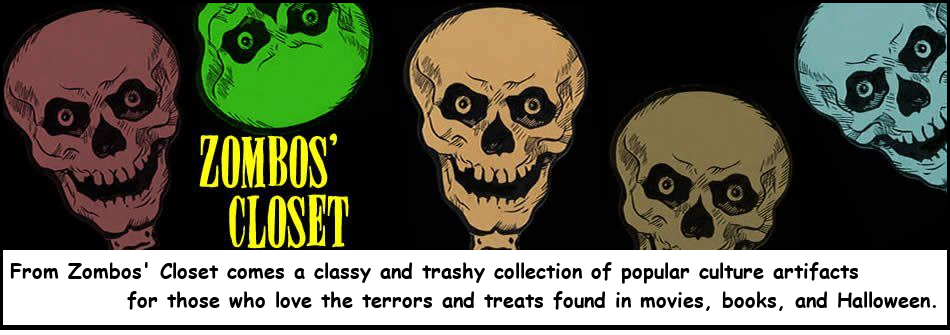The House at Black Tooth Pond
By Stephen Mark Rainey
Book Review
 Partly Lovecraftian, partly folk horror, there is a terror permeating the upstairs floor at The House at Black Tooth Pond and throughout the forest surrounding it. A horribly mutilated body covered in some sort of transparent gel, “like wet shellac,” kicks the horror in gear, bringing together Sheriff Gordon Parrot and coroner Melissa Crawford (looking like “a fourteen-year-old kid”) to the threshold of something quite nasty and relentless.
Partly Lovecraftian, partly folk horror, there is a terror permeating the upstairs floor at The House at Black Tooth Pond and throughout the forest surrounding it. A horribly mutilated body covered in some sort of transparent gel, “like wet shellac,” kicks the horror in gear, bringing together Sheriff Gordon Parrot and coroner Melissa Crawford (looking like “a fourteen-year-old kid”) to the threshold of something quite nasty and relentless.
The Pritchett brothers take the brunt of the nasty, however, and their walks through that forest lead them further into the mystery, but more on the receiving end than the investigative one. As detectives they fall short, but their roles as victims lean toward the terminal side as they succumb to hallucinations and actions not best suited for survival. But they were not the first, and clearly, will not be the last, so expect another novel to move this terror along to flesh out the whatsis and, hopefully, how to kill it: and, on that point, rather carefully, Rainey leaves us on a suspenseful note, making you wish he writes the story’s continuance quickly.
He likes to spin tales best suited for campfires and dead of nights, so this one naturally gives credence to the small Virginian town of Sylvan County’s shady history, where his usual geographic haunts and creatures fuel the local gossip and tall tales. There is even a local folklore expert to assist the Sherif along his investigation: beginning with the Yck, which, as Professor Shelton Scales relates, originated with the Algonquin Indians. Sort of like the Wendigo, it incessantly hungers. Given the weirdness of the case, the Sherif begins to believe in the weird to find the answers, so he starts thinking maybe those tales of the Fugue Devil and assorted baddies are not all superstitious tall tale nonsense after all.
The stomping ground of the badness this time is Black Tooth Pond, the place where “despite a low breeze, the air carried no sound—no bird songs, no rustling of squirrels or other small animals” and where the sunlight’s “brilliant rays never filtered all the way down through the overhanging branches.”
Rainey’s characters’ dialogs, relationships, and positionings in his stories are always on target for moving the story along, pacing the plot, and, most importantly, creating that small town, hidden secrets, environment naturally. You also feel for every character caught in his cosmic web of Black Tooth Pond’s nefarious entity, so much so, you may find yourself wondering “you idiot!” or “okay, you’re smart, what are you going to do about it?”
Every cosmic baddie needs a home and Rainey dresses up a dilapidated homestead, situated deep in the forest of Black Tooth Pond, where the brothers discover a newly revealed pathway leading to it. A monstrous magnolia tree stands as sentinel in front of the Caviness family’s abandoned home, where a sycamore tree has taken root within, shooting its branches up to and through the ruptured roof. The upstairs is dark and brooding and best to leave alone (the darkness and those stairs look foreboding). But something calls to them and an unsettling whippoorwill’s cry is heard at the oddest times, increasing their sense of a dangerous presence in the dark. Old news clippings of dire and catastrophic events are found, piled up on the coffee table, sent in letters to the Caviness family, whose fate and background are lost in time. When Martin starts seeing “shadows of human beings— smoky, insubstantial— wavering before a nebulous, electric-blue backdrop” he begins to question his sanity, and worse, fear he is sane.
Moments of suspenseful dread are experienced by both the sheriff and the brothers independently, as their two lines of inquiry bring them closer and closer to the evil in the house, across the forest, and maybe even into the town. Whatever lurks, it had done so for a long time, and it was something the earlier locals had tried to destroy with fire. Making matters worse and weirder, the writer of those letters, filled with awfully bad news, sent to the Caviness family many years ago, shows up, moving hell a little bit closer for everyone involved.
The House at Black Tooth Pond is filled with keep-turning-those-pages suspenseful chapters. The other chapters carefully build the mystery, wrapped in layers both the sheriff, his coroner, and Martin and Phil try to unravel, which also keeps you turning those pages. Rainey is one of a handful of writers who can give you the supernatural, the cosmic, and the eldritch terror in carefully measured doses that intoxicate you their simple cleverness and their absolute dread. Lovecraft would be proud. So keep the lights on while you read, even if you are on a Kindle. You may just start hallucinating something bad in the dark, just out of reach, but some thing definitely reaching for you.
I wrote this review for The Horror Zine.





